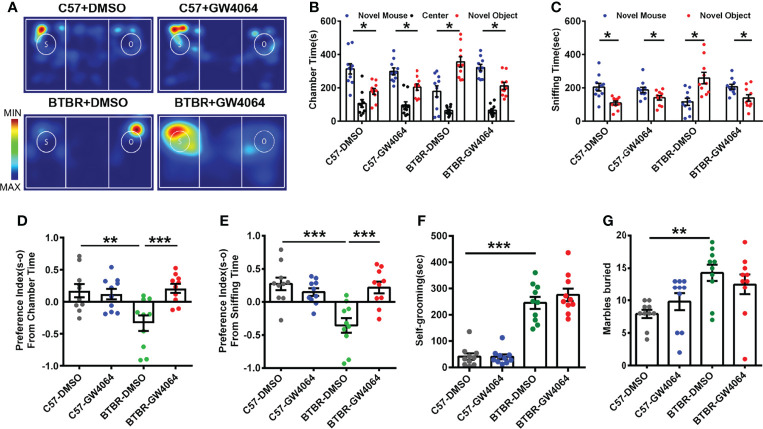Figure 1.
GW4064 treatment rescued the social deficits but not repetitive behaviors in BTBR mice. (A) Representative heat maps showing the total time and location of the BTBR and C57 mice during the 10 minute three-chambered social test. The closer the color is to red, the larger amount of time they explore the mice. “O” and “S” respectively represent the novel object and the novel mouse. (B) In the three-chamber test, C57 mice stayed longer in the side chamber than the novel mouse, GW4064 or DMSO administration did not affect the sociability in C57 mice. BTBR mice displayed a tendency to spend more time in the side chamber with the novel object. GW4064 treatment rescued the social deficits in BTBR mice. (C) In the three-chamber test, C57 mice spent more time sniffing the novel mouse. BTBR mice sniffed more on the novel object, while GW4064 treatment significantly rescued the social deficits in BTBR mice. (D, E) The treatment of GW4064 reversed the negative preference index from chamber time and sniffing time in BTBR mice to a similar level in C57 mice. (F, G) BTBR displayed a higher self-grooming time and buried more marbles than C57 mice, and the GW4064 treatment did not alter the self-grooming time and marble burying in BTBR mice. The data are presented as the mean ± SEM. n = 10. *p < 0.05, **p < 0.01, ***p < 0.001.

